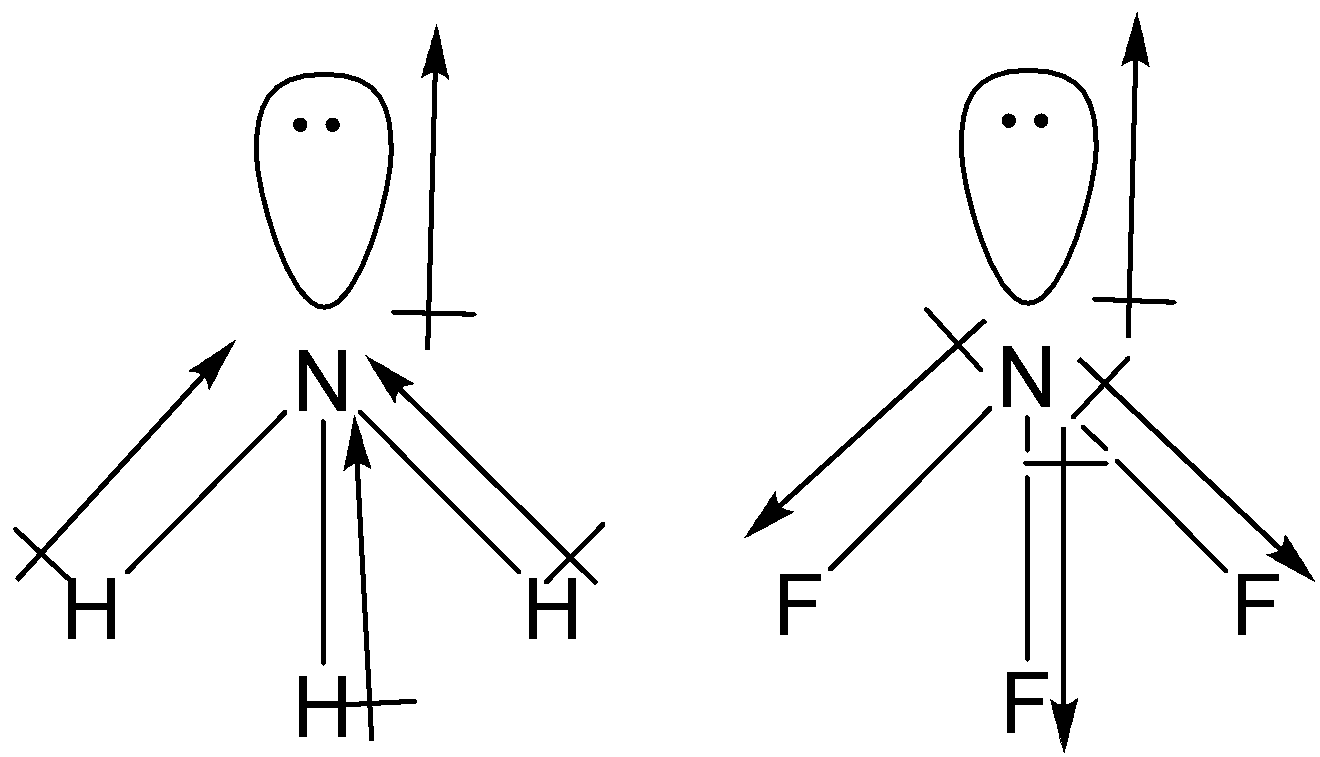
What is the correct dipole moment of
(A)-
(B)-
(C)-
(D)-
Answer
500.4k+ views
Hint: Dipole moment is a measure of polarity of a bond. It is the product of the charges and the distance between partial charges. It is a vector quantity and its direction is always given from less electronegative atom to more electronegative atom.
It is generally expressed in debye (D) and 1 D =
Dipole moment of polar molecules containing lone pairs is the vector sum of dipole of lone pair and net dipole moments of bonds.
Complete answer:
Both

The dipole moment of lone pairs in
Dipole moment of
We know that nitrogen is more electronegative than hydrogen. Therefore, the dipole moment of
Then, 1.4 D will be equal to
Dipole moment of
Electronegativity of F is more than that of N, thus the direction of dipole moment of
Multiplying 0.24 D with
So, the correct answer is “Option A”.
Note: The dipole moment of lone pairs in
Dipole moment of
We know that nitrogen is more electronegative than hydrogen. Therefore, the dipole moment of
Then, 1.4 D will be equal to
Dipole moment of
Electronegativity of F is more than that of N, thus the direction of dipole moment of
Multiplying 0.24 D with
It is generally expressed in debye (D) and 1 D =
Dipole moment of polar molecules containing lone pairs is the vector sum of dipole of lone pair and net dipole moments of bonds.
Complete answer:
Both

The dipole moment of lone pairs in
Dipole moment of
We know that nitrogen is more electronegative than hydrogen. Therefore, the dipole moment of
Then, 1.4 D will be equal to
Dipole moment of
Electronegativity of F is more than that of N, thus the direction of dipole moment of
Multiplying 0.24 D with
So, the correct answer is “Option A”.
Note: The dipole moment of lone pairs in
Dipole moment of
We know that nitrogen is more electronegative than hydrogen. Therefore, the dipole moment of
Then, 1.4 D will be equal to
Dipole moment of
Electronegativity of F is more than that of N, thus the direction of dipole moment of
Multiplying 0.24 D with
Recently Updated Pages
Express the following as a fraction and simplify a class 7 maths CBSE

The length and width of a rectangle are in ratio of class 7 maths CBSE

The ratio of the income to the expenditure of a family class 7 maths CBSE

How do you write 025 million in scientific notatio class 7 maths CBSE

How do you convert 295 meters per second to kilometers class 7 maths CBSE

Write the following in Roman numerals 25819 class 7 maths CBSE

Trending doubts
State and prove Bernoullis theorem class 11 physics CBSE

What are Quantum numbers Explain the quantum number class 11 chemistry CBSE

Write the differences between monocot plants and dicot class 11 biology CBSE

Who built the Grand Trunk Road AChandragupta Maurya class 11 social science CBSE

1 ton equals to A 100 kg B 1000 kg C 10 kg D 10000 class 11 physics CBSE

State the laws of reflection of light




